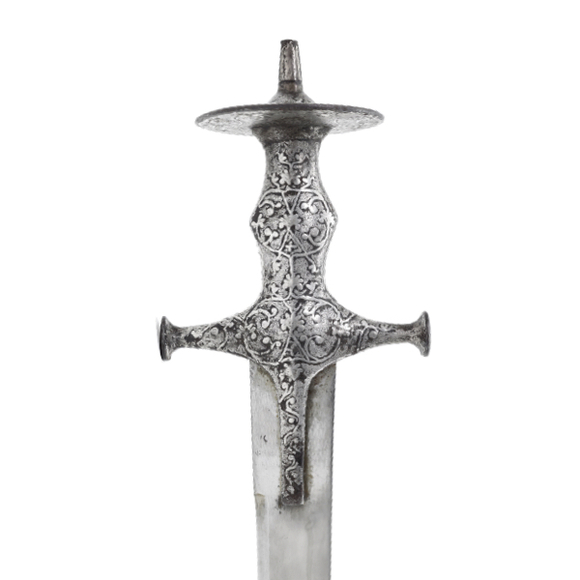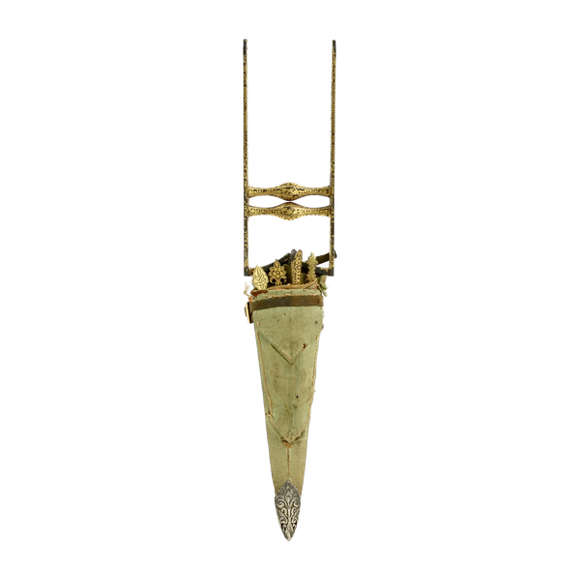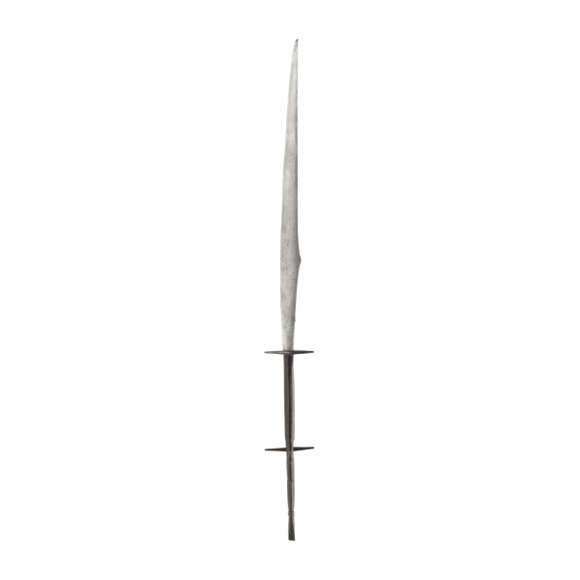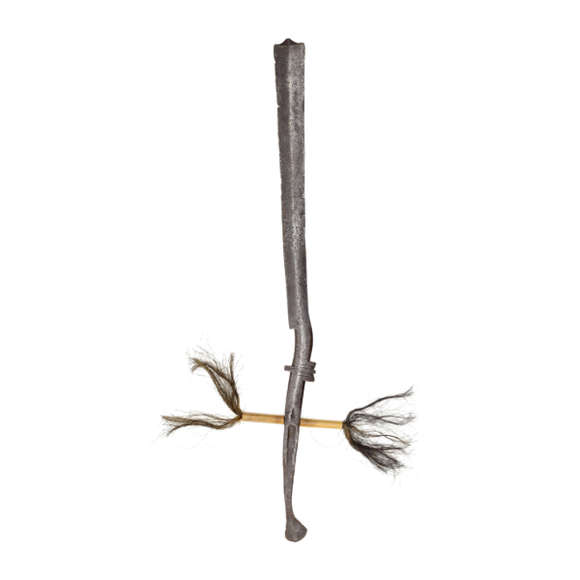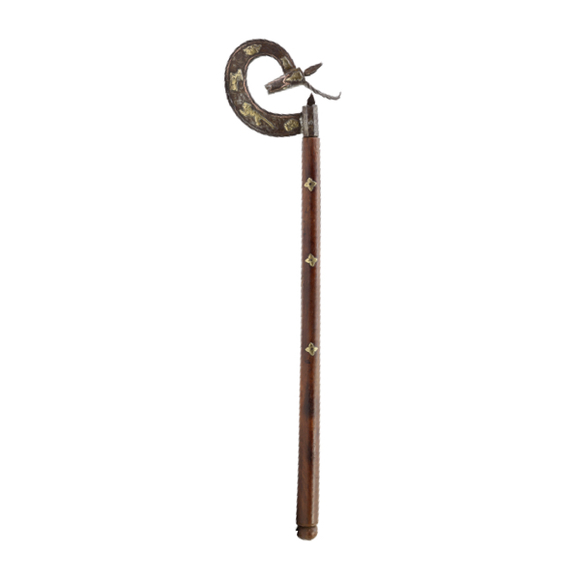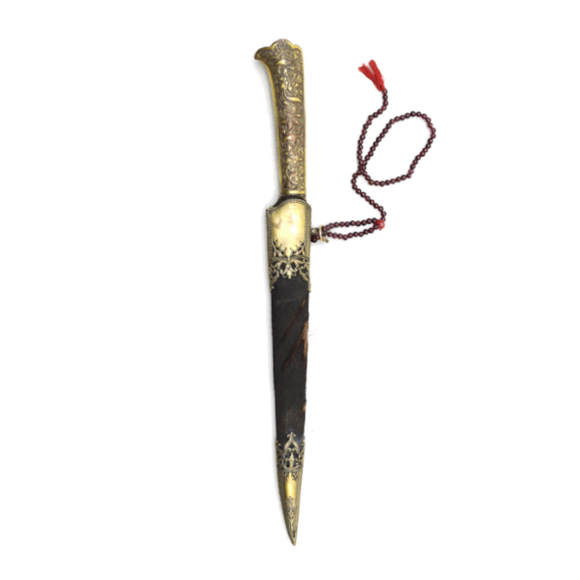The hilt is in the typical Marwari Rajput style, made by Ram Namar in 1857 A.D.
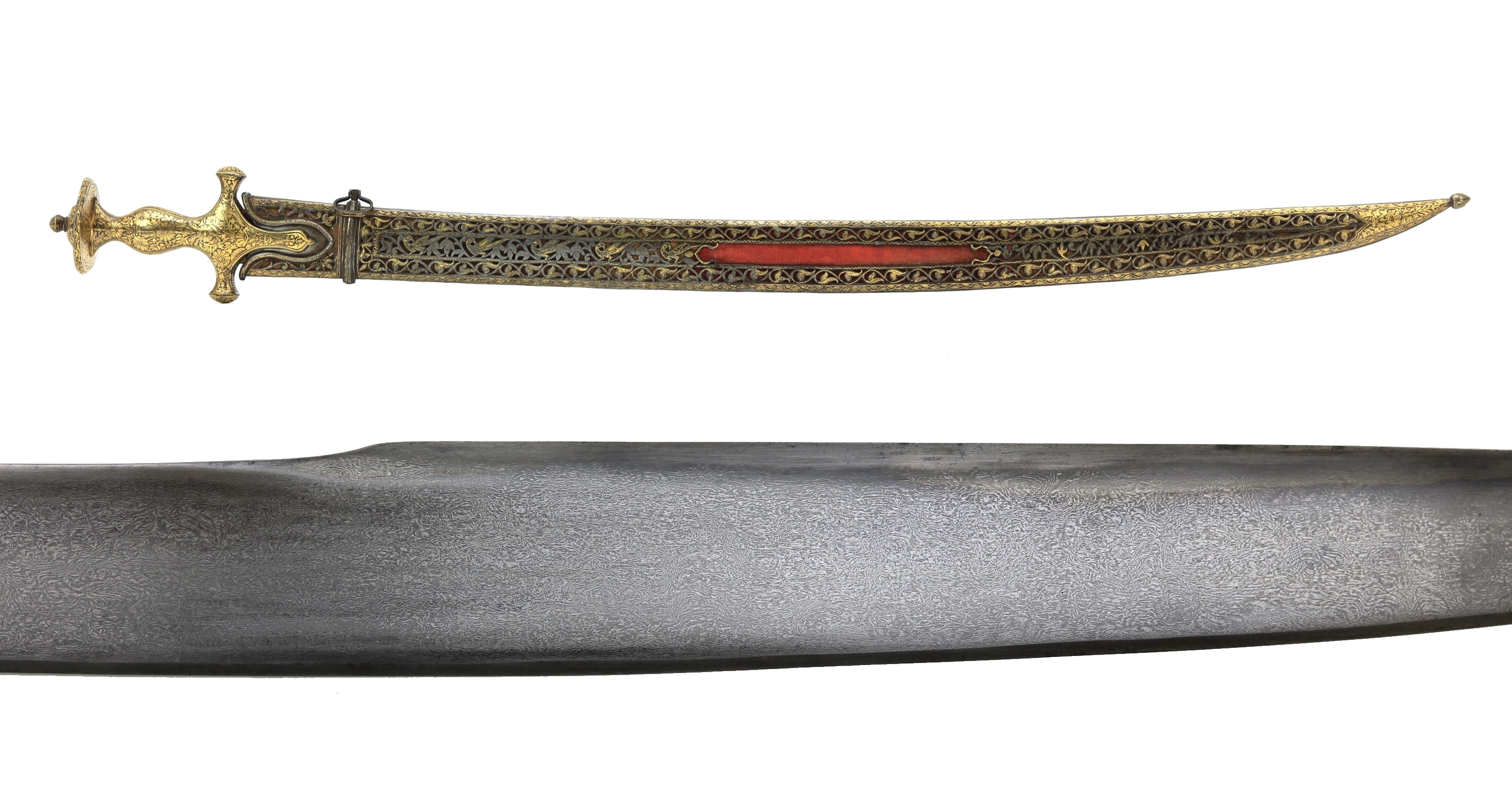
Sheathed 87.8 cm
Sword 82 cm
71 cm
(to center crossguard)
Base 6 mm
Middle 4 mm
At widest 2 mm
5 cm from tip 1.5 mm
Base 34 mm
Middle 30 mm
Widest 34.5 mm
5 cm from tip 22.5 mm
740 grams
13 cm from center guard
Iron, (wootz) steel, wood, silk and cotton velvet, gold, pitch.
Probably Lahore
Punjab, north India
19th century
Description
In consignment for a friend, a fine wootz steel talwar.
The blade is relatively straight for this type of sword, with a long pronounced backedge and a double-edged tip. It is made entirely of very fine-grained, high contrast wootz steel of a delicacy that is rarely seen.
The blade has a strong ricasso that is decorated with koftgari work in gold, in the form of geometric decorative borders, flowers, and a pair of birds on either side.
Hilt
The hilt is of Hakim shāhī form. Hakim probably refers to Hakim Khan Sur, a Pashtun warrior who fought the Mughals and died in a battle in 1574. Shāhī comes from the Persian shāhī (شاهي), meaning "imperial, royal, regal, kingly". Such hilts were popular among others in Lahore, and the slightly forward-leaning quillons and relatively fat grip section further hint towards Lahore origins.
It is made entirely of iron and decorated with exceptionally fine gold overlay, after which the underlying iron was blackened for deepened contrast. The decor consists of a central stem from which other stems emerge, all carrying flowers. A typical Mughal motif that relies strongly on Persian decorative traditions.
Scabbard
The scabbard is made of two wooden halves that were covered by red velvet, most of the pile now worn as is usually the case. An unusual feature is that this scabbard is entirely cased in iron, elaborately pierced to show three rows of designs of flowers on either side. In the center is an open section to showcase the expensive velvet underneath. On the left side, the outside when worn is a row of five parakeets. These birds were revered by Hindus, in part, because they were heard reciting prayers in Hindu temples, were popular pets and seen as auspicious symbols.
The scabbard is adorned with gold koftgari work but of a different hand than the much finer work seen on the hilt. Such discrepancies are common, as it were often different people sometimes in different workshops that made the various parts. The scabbard is an exact and precise fit, so there is no doubt it was made for this sword.
Condition
Blade in very good condition. No edge damage, no pitting, and no distortion of the edge profile by sharpening. No pitting, only a small number of very slight, isolated blemishes. It could benefit from a professional polish to bring out the wootz better than it is seen now. Some wear to the gold at the forte of the blade.
Hilt in a remarkable state of preservation with nearly all the gold remaining. As can be expected, there is some more wear on the scabbard, with some losses to the gold and losses to the pile of the velvet.
See photos.
Conclusion
A quality piece made for someone of considerable means. It combines a very fine grained wootz blade with a very nicely executed gold overlaid hilt, and a rarely seen type of pierced and damascened scabbard.
Probably from Lahore, where there was a sizeable community of craftsmen producing lavishly decorated arms and armor.

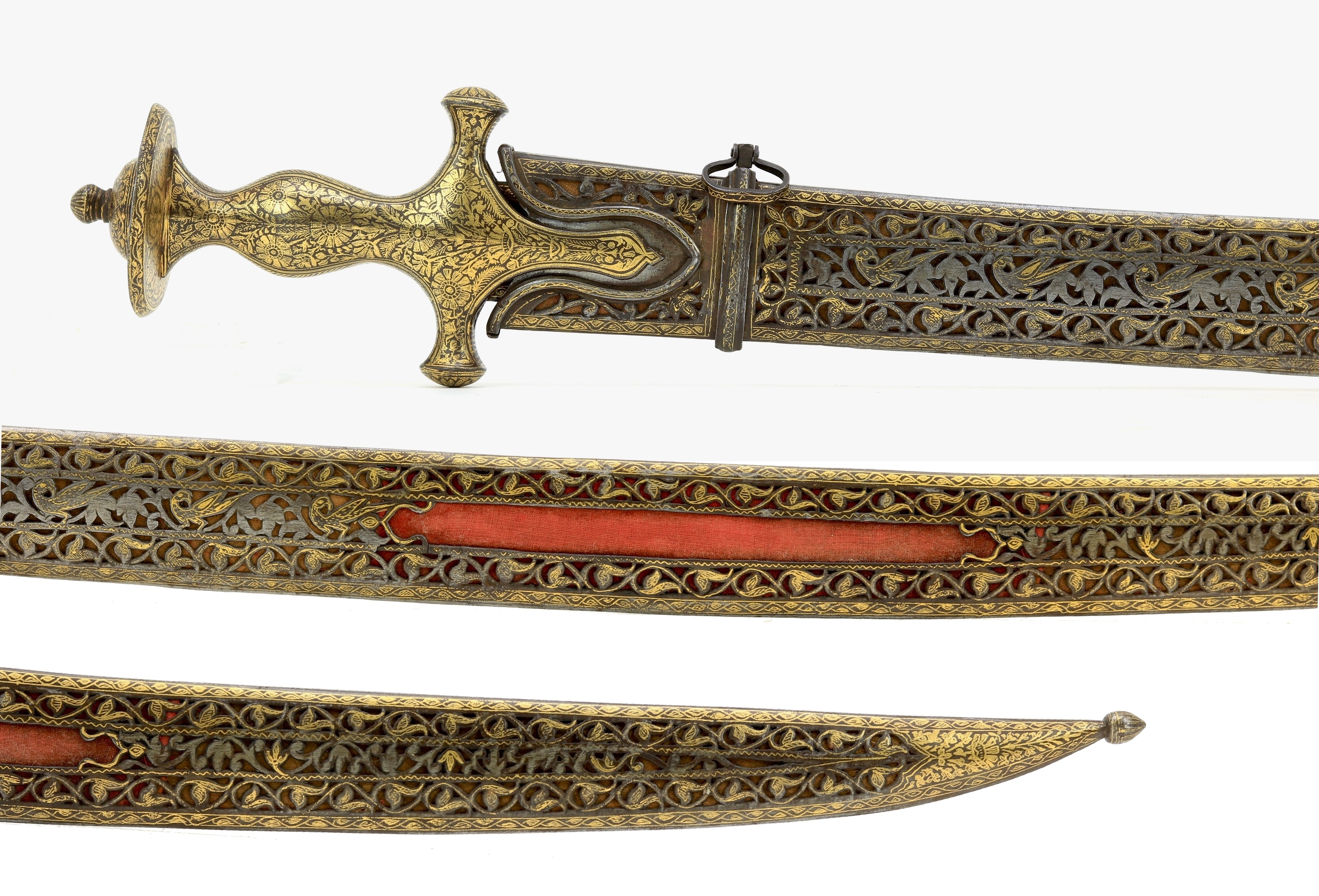

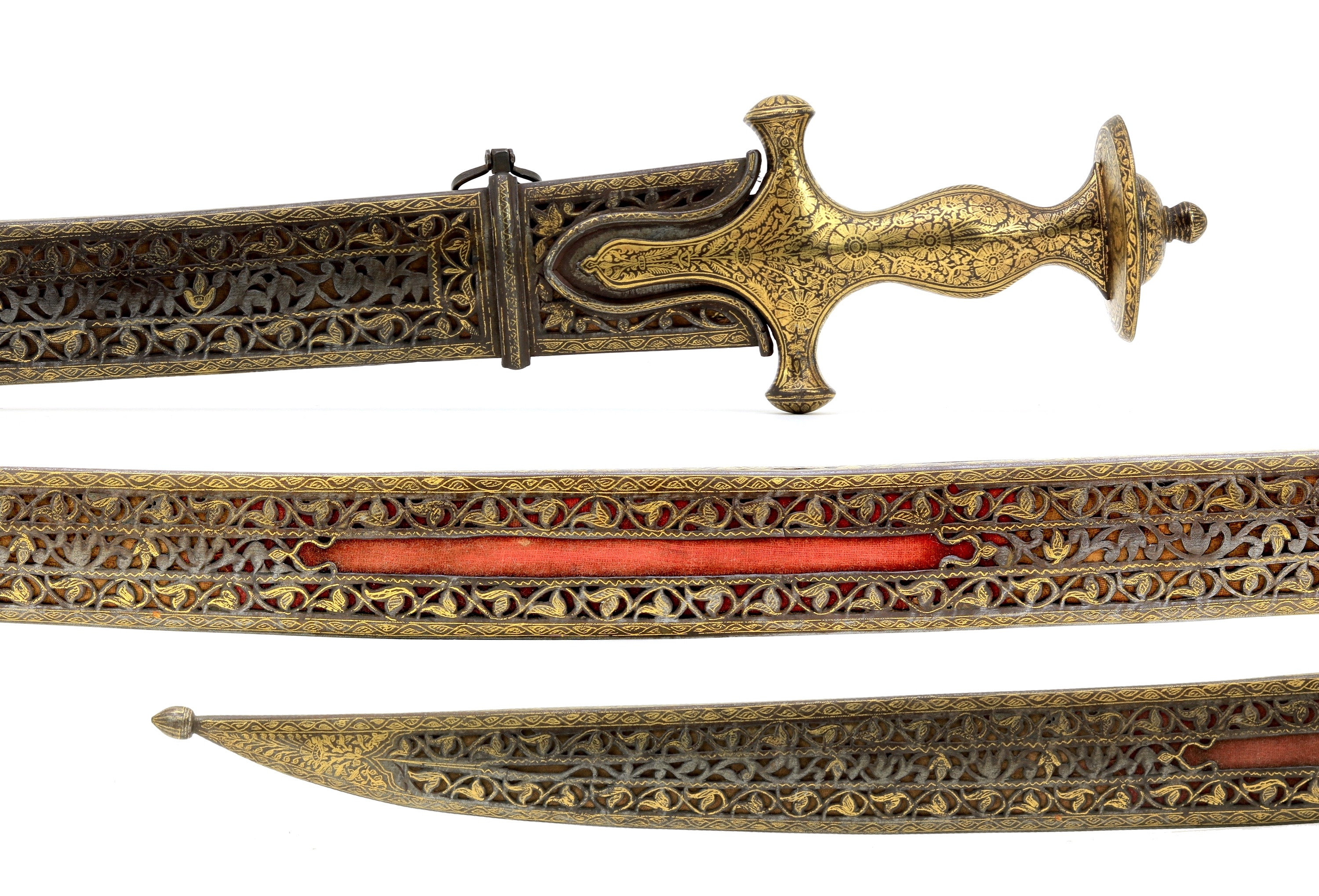
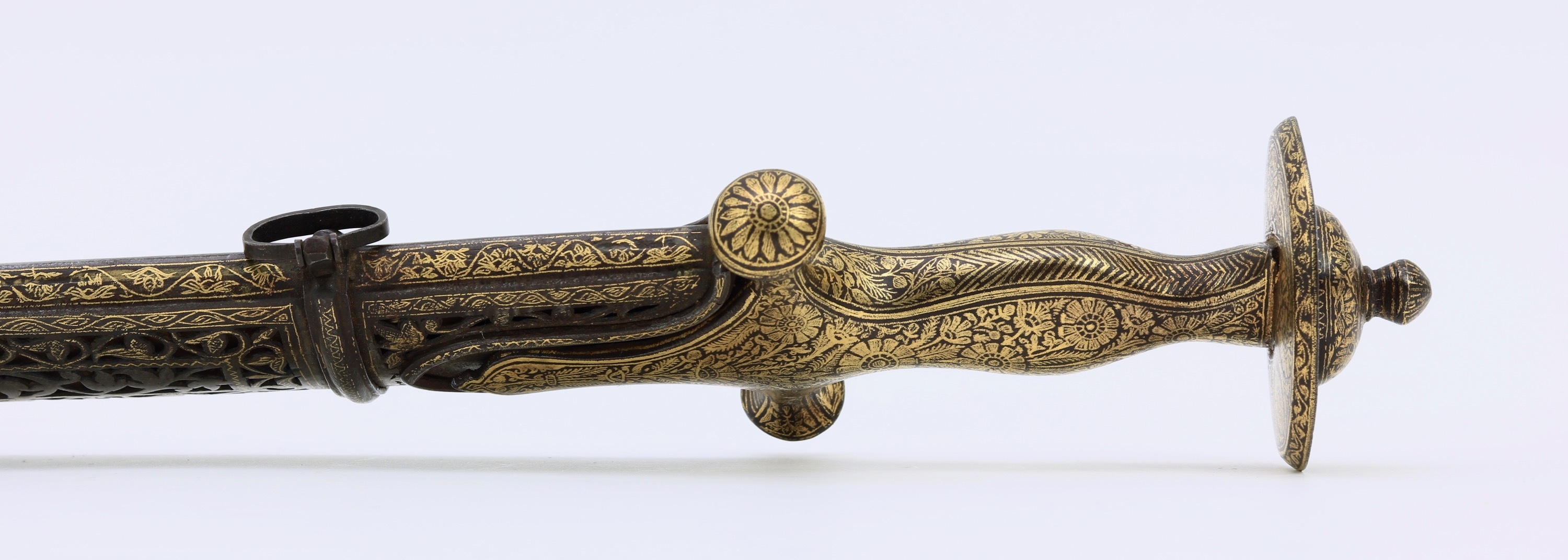
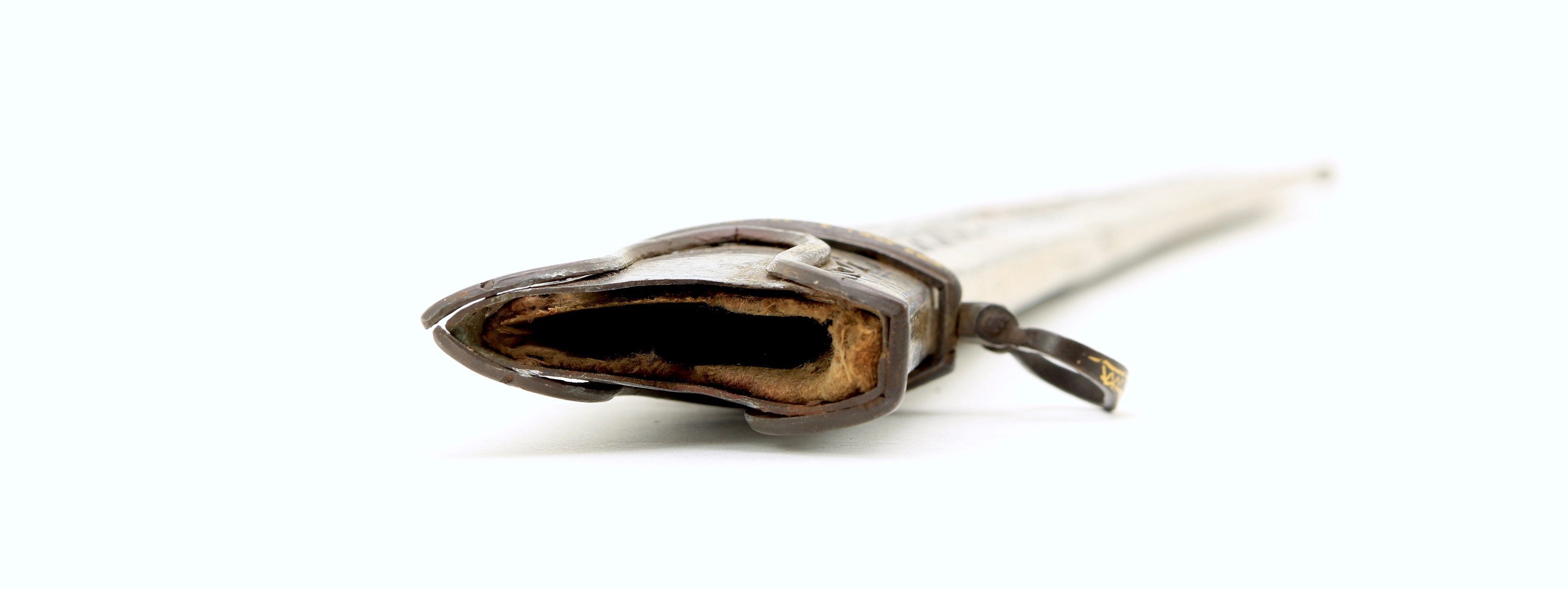
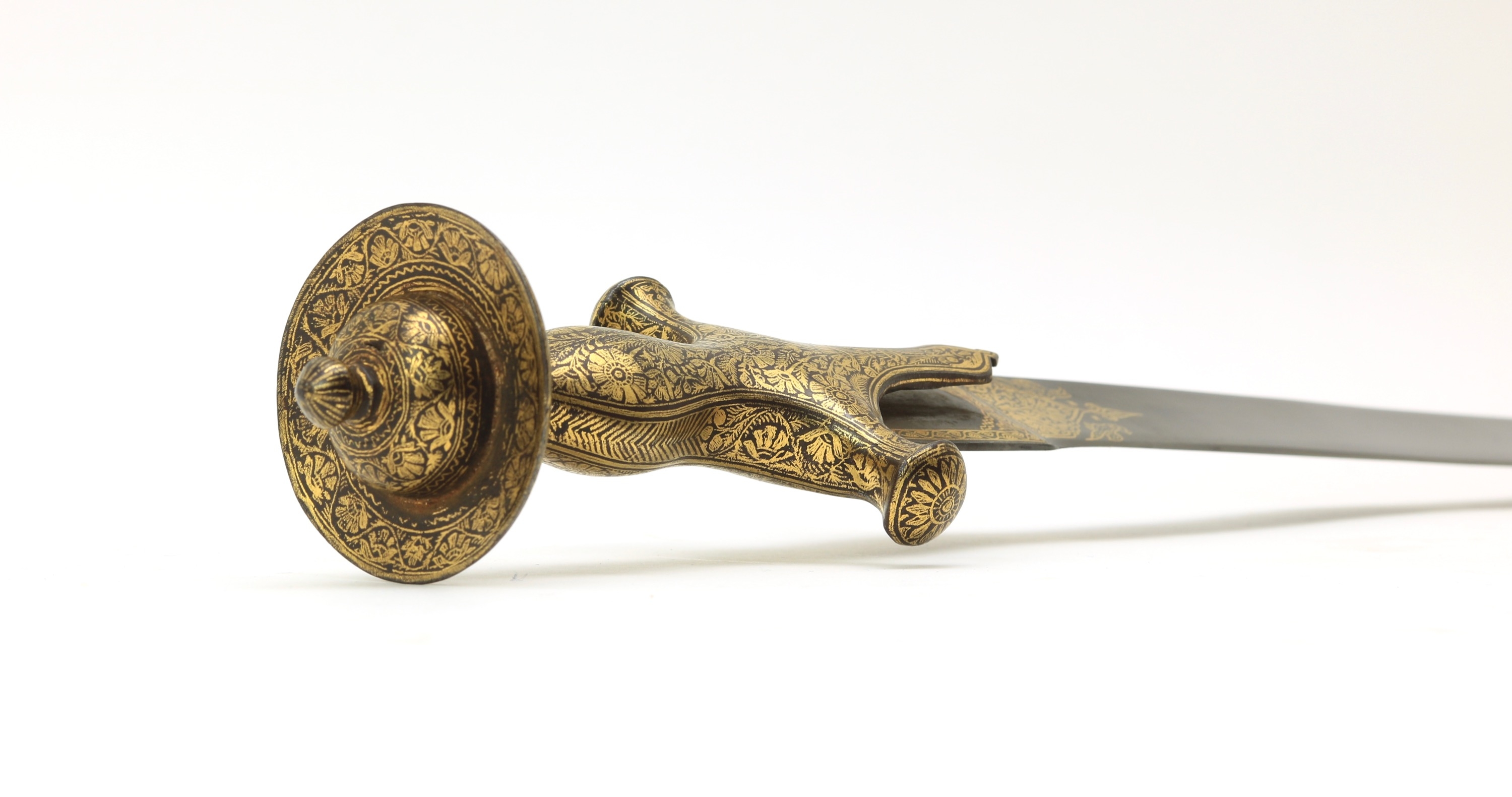
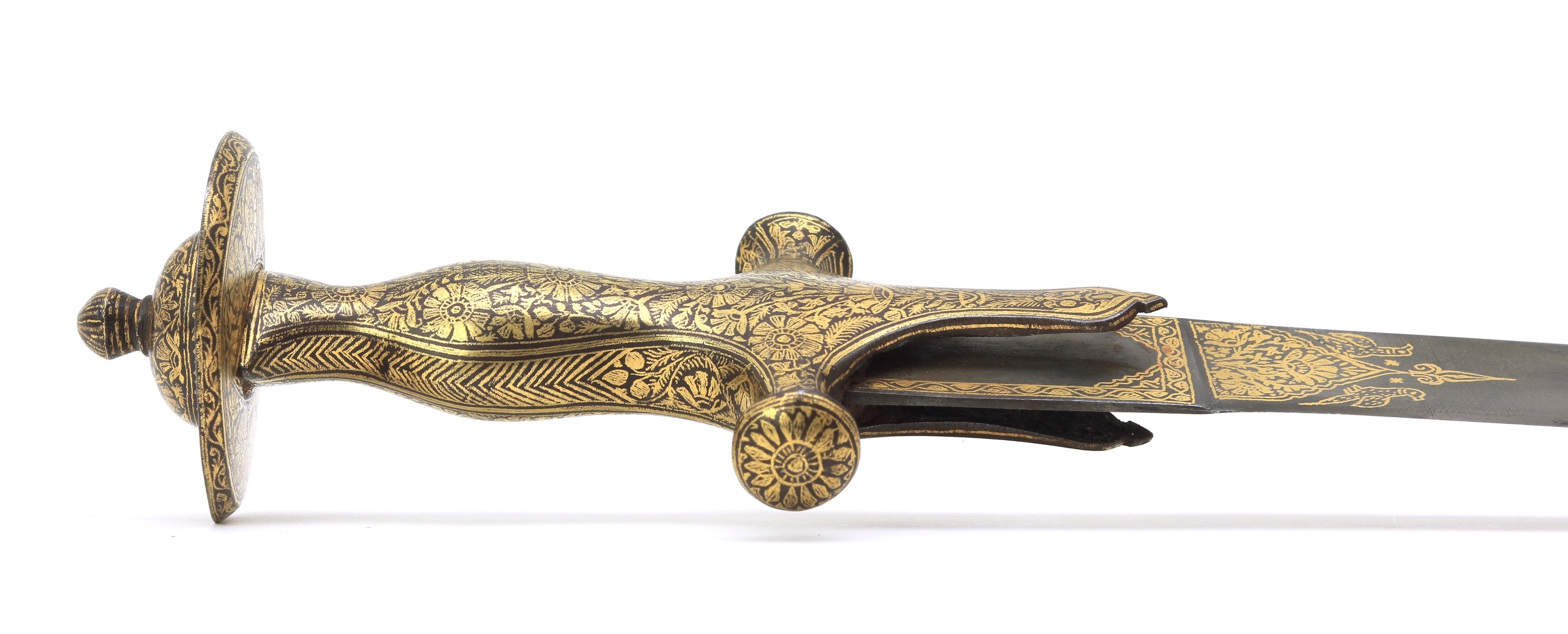

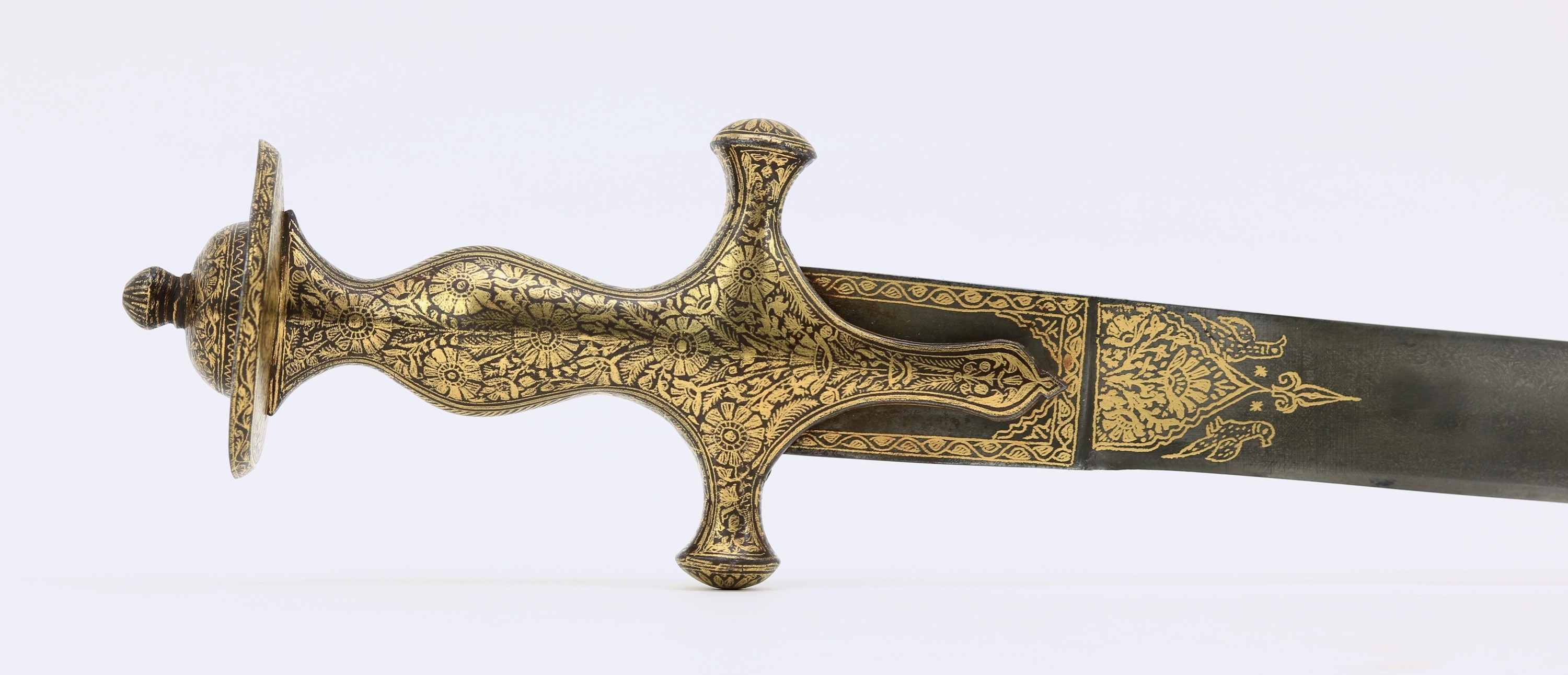
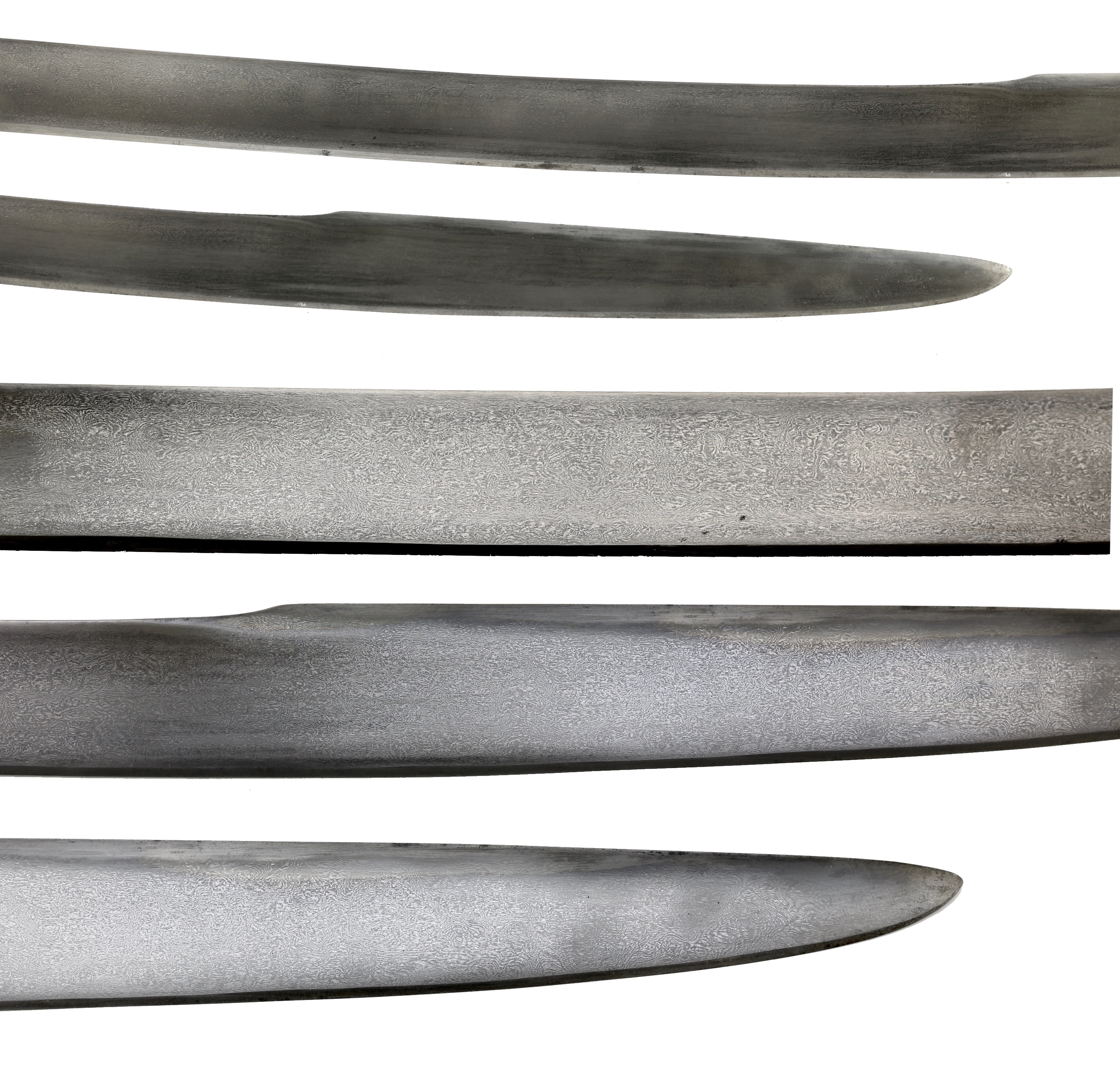

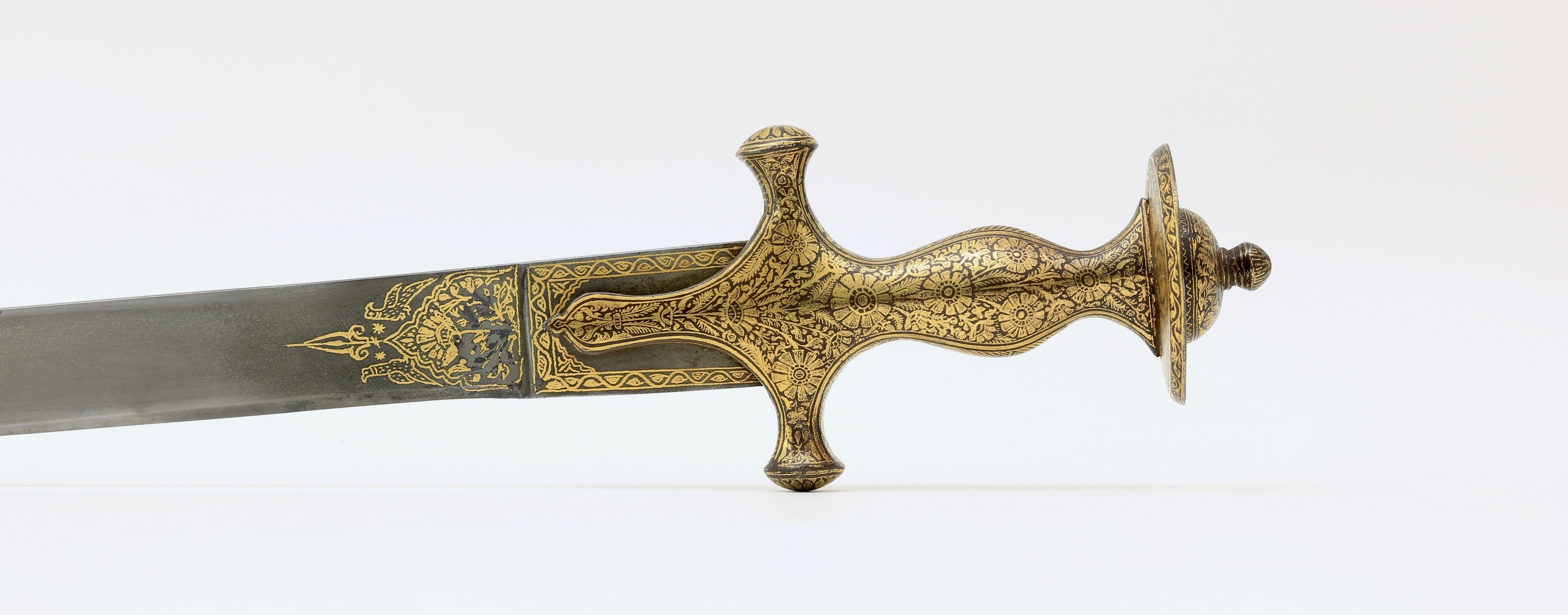


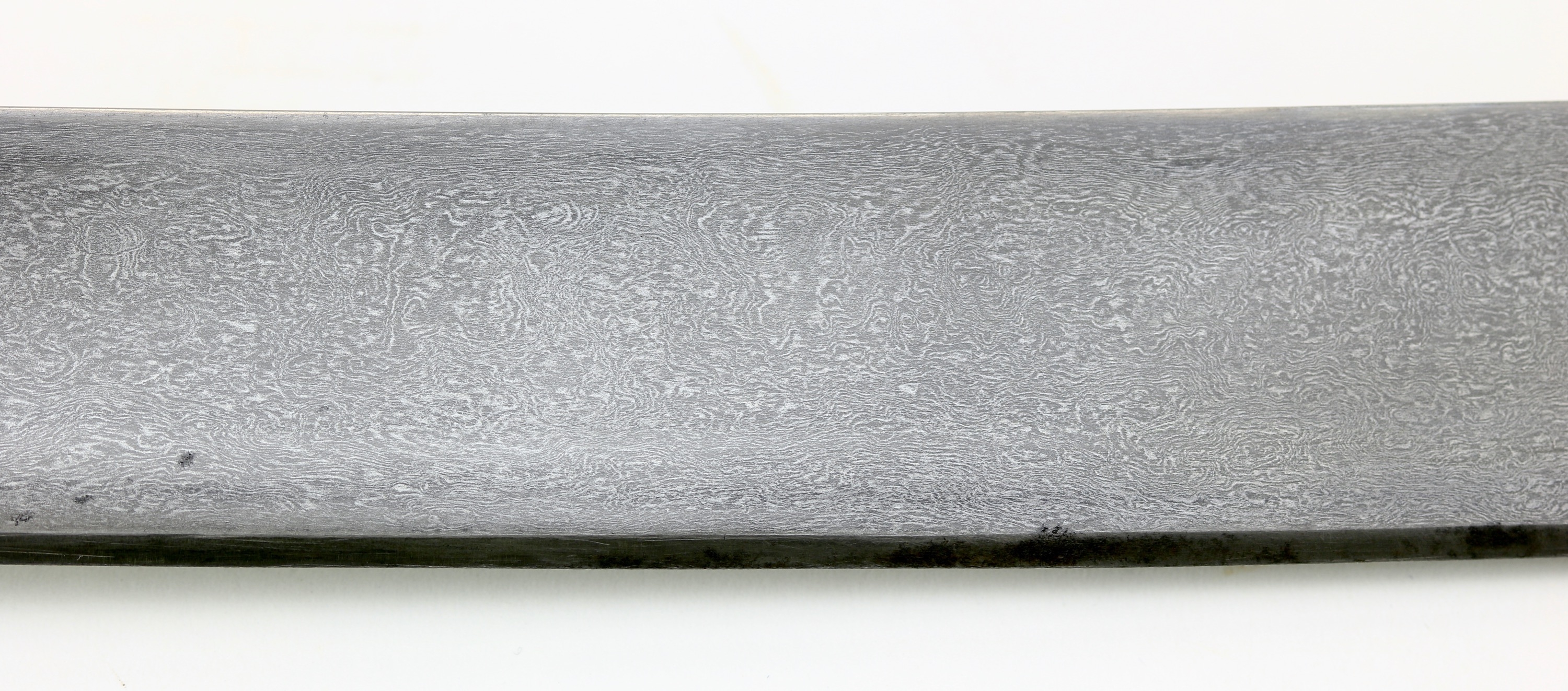
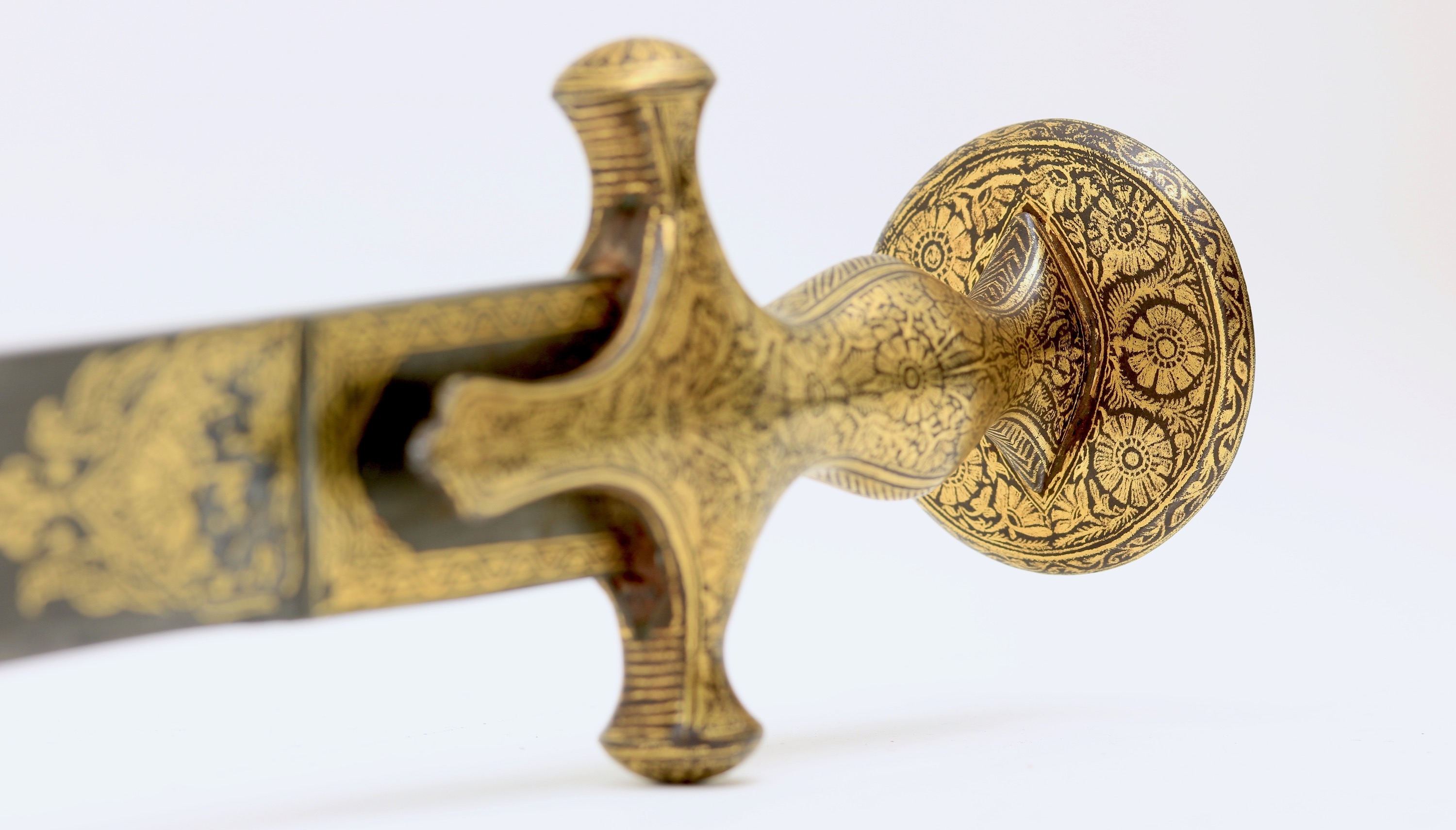
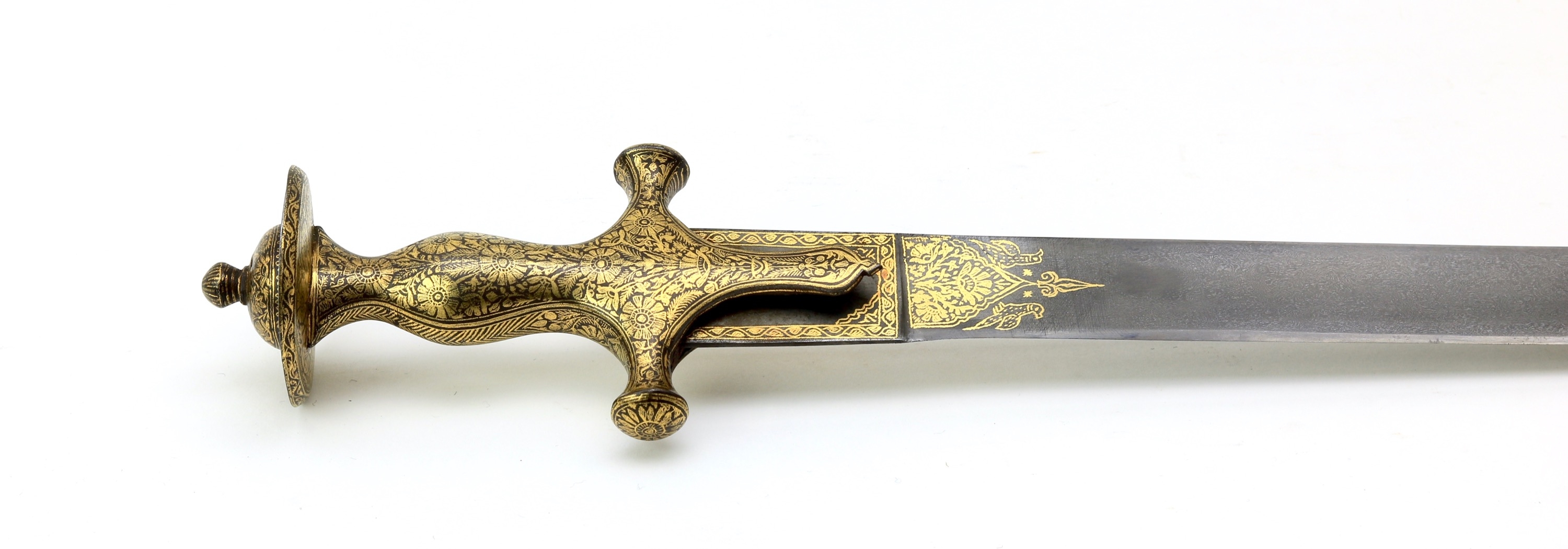
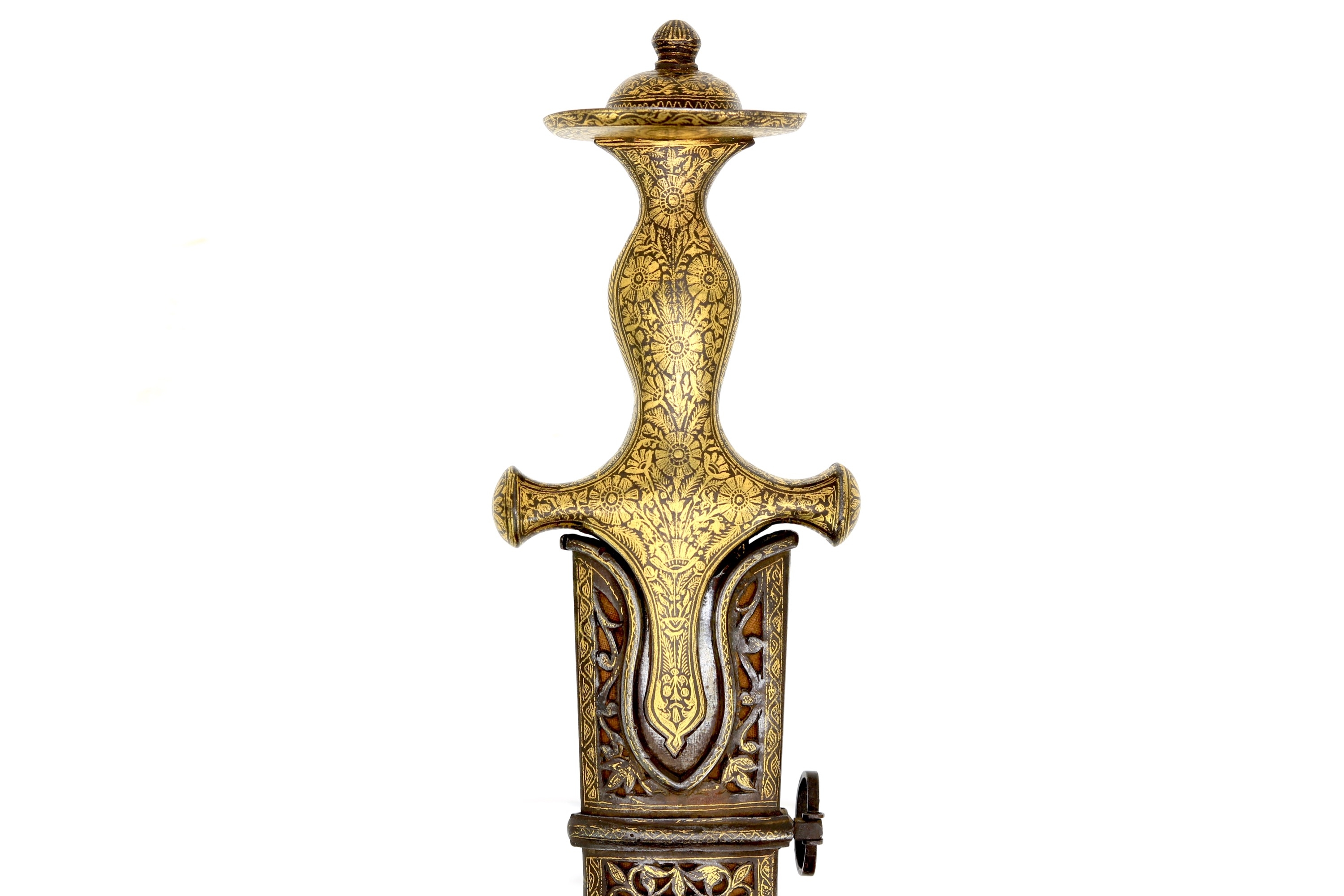
These mysterious weapons were already obsolete when the first ethnographers encountered them.
This peculiar sword was used by the Garo people of Assam for fighting, clearing the jungle, and animal…
Fine Indian kard with gilt copper alloy hilt, decorated with chiseled flowers.

